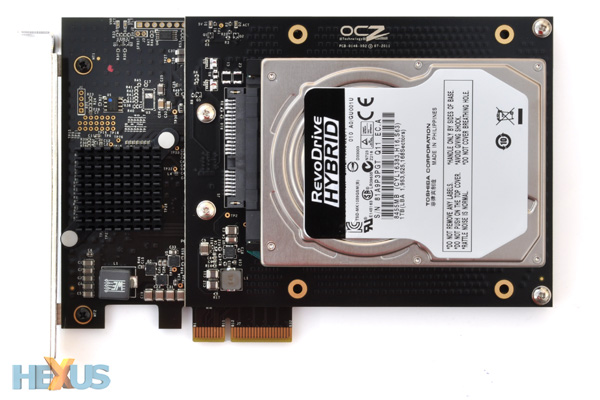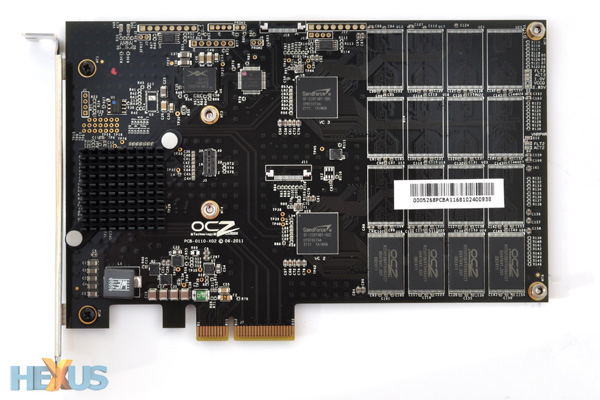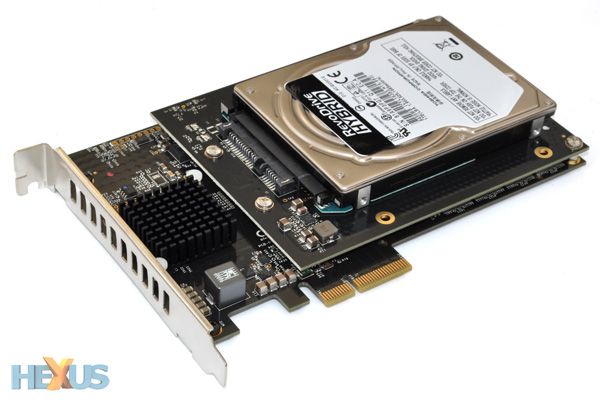Introduction
We've said it before, but we'll say it again; we love solid-state drives (SSDs). The combination of near-instant access, blazing performance, practically-silent operation and low power consumption is almost too good to be true, and we're now at the stage where traditional hard disk drives don't just feel slow, they feel old.
But SSDs aren't perfect, and if you're wanting to benefit from all that's good about solid-state storage, you'll need to be prepared to accept the two common drawbacks: SSDs are expensive, and they typically don't offer a lot of capacity for your pound.
As a result, many users have become accustomed to a two-pronged approach that sees a compact SSD utilised as a high-speed system disk and a high-capacity HDD used as a secondary storage device. It's a useful combination that covers all bases, but in this scenario, it's up to the user to ensure that files relevant to system performance are stored on the SSD, and while that's hardly a chore, managing separate disks for optimum performance isn't going to be every user's favourite past time.
So is there another way? Well, yes, a couple, actually, and they all tend to involve using solid-state media as a cache for a larger, affordable hard disk. Seagate tried it with the Momentus XT back in 2010, and more recently, Intel has attempted to bring the concept of SSD caching to the masses with Smart Response Technology (SRT).
Both have their merits, but they're also accompanied by a couple of shortcomings. Seagate's Momentus XT offers a tentative 4GB cache that isn't ideal for out-and-out performance, and Intel's SRT is platform-specific - meaning you'll need a compatible Z68 motherboard for it to work. Hardly convenient, so in steps OCZ with the RevoDrive Hybrid.

Aimed at the higher end of the market, the RevoDrive Hybrid is, as its name suggests, two core technologies married together in a single all-in-one package. The first ingredient - a third-generation 120GB RevoDrive PCIe SSD - is on hand to provide read and write performance of up to 910MB/s, while the second ingredient - a 1TB hard drive - is used to provide capacity.
The way it works, in a nutshell, is fairly straightforward: use the hard drive as your primary system disk, and as time goes by, frequently-used "hot" data is cached to the 120GB SSD for ultra-fast access the next time around. Through the use of bundled third-party software, the caching all works behind the scenes with no intervention from the user, providing you, in theory, with an optimum mix of performance and capacity.
A match made in heaven? Perhaps, but the fact that OCZ's using an ultra-high-end RevoDrive 3 as the basis of the drive's SSD segment ensures an SSD-like price tag of around £390. For a storage solution, that's a figure that'll have most jaws hitting the floor, but it needs to be put into a cost-per-gigabyte perspective. In that context, the drive's value proposition works out at around £0.39-per-gigabyte, which, on a gigabyte-by-gigabyte basis, makes the RevoDrive Hybrid better value than a traditional SSD.

So what exactly are you getting for your money? Well, on the SSD side of things, quite a lot as the RevoDrive Hybrid is essentially a third-generation RevoDrive 3 with a hard-disk in tow.
Looking solely at the RevoDrive portion, we can see that OCZ employs a pair of SandForce SF-2281 controllers hooked up to eight 25nm asynchronous 8GB NAND flash memory chips apiece (four up front, a further 12 round back), providing a total flash capacity of 128GB. However, a good chunk of that is over-provisioned to help maintain long-term performance and reliability, leaving an actual cache size of 100GB (93GiB).
What's interesting is that the third-generation RevoDrive design eschews the PCIe-to-PCI-X Bridge chip and PCI-X to SATA RAID controller found on previous models in favour of a more elegant PCIe-to-SAS device. The chip, seated beneath the heatsink in the image above and dubbed the OCZ SuperScale Storage Controller, cancels the need for a second bridge chip and provides a massive 2GB/s of bandwidth via a PCIe x4 interface.
On top of that, OCZ has rolled in the second generation of its proprietary Virtualised Controller Architecture (VCA). Version 2.0, designed primarily to offer an expanded feature-set in enterprise environments, serves up a few useful additions to the RevoDrive Hybrid. Unlike a typical RAID 0 array, data isn't striped to all available controllers and is instead controlled by a virtualisation layer that utilises a complex command queuing structure to balance drive loading.
The complexity of the hybrid drive is such that there are controllers for its controllers, but the way in which VCA 2.0 passes information between the SandForce controllers and the SuperScale controller is key, as without a traditional RAID array, it now supports the TRIM and SCSI Unmap commands. The RevoDrive Hybrid, with a PCIe-to-SAS controller supports the latter, but here's the catch; Windows 7 doesn't offer software support for the SCSI Unmap command, so while the hardware's capable, OCZ's waiting on Microsoft to introduce compatibility at the OS level.

The underlying RevoDrive is cutting edge, but the hybrid hard disk on top? Less so. Attached to a daughter board that itself is pre-connected to the main PCB, the 2.5in hard disk is identified as a Toshiba HDD2K51 - a 1TB model operating at a basic speed of 5,400RPM.
Right off the bat, the use of a hard disk negates some of the benefits of solid-state storage - including silent operation, increased shock resistance and ultra-low power consumption. The Toshiba disk bumps the latter up to 10W (compared to 8W for a disk-less RevoDrive 3), and though the noise of the spinning mechanical drive is barely audible in our high-end test platform, it obviously isn't silent.
OCZ claims to have used a 5,400RPM drive to keep the overall price tag below 500 US dollars - the RevoDrive Hybrid currently sells for $499.99 across the pond - but the use of a relatively-slow hard disk is nonetheless surprising. We'll see how (or if) that affects performance a little later in the review, but first, let's turn our attention to the other big piece of the Hybrid puzzle: software.









